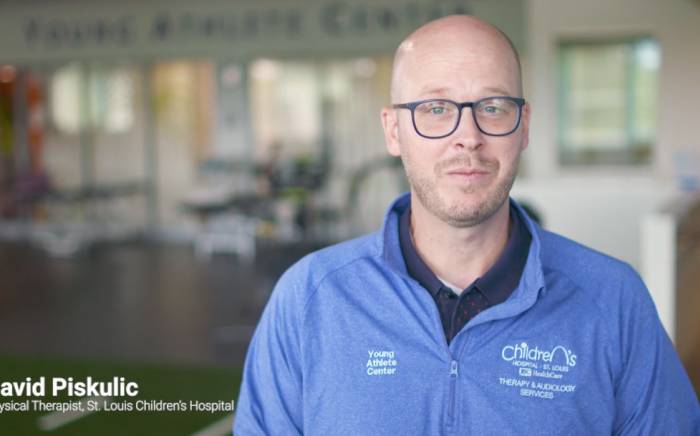Do you have and upcoming Ventilation/Perfusion (VQ) scan scheduled at St. Louis Children’s Hospital? Watch this video to learn what to expect during your visit.
Know Before You Go: Kids
What is a VQ scan?
A ventilation/perfusion (VQ) scan is a test that checks to see if your lungs are getting enough air and blood flow to them. The VQ is a two part test. The first part, called ventilation, looks to see if air is getting to each area of your lungs. The second part, called perfusion, looks to see how well your blood moves within your lungs.
What will happen during my VQ?
When it is time to begin, you will sit on a chair with the camera behind you. This is the part of the test where the doctor wants to see if your lungs are getting enough air flow to them. You will have to breathe in air that shows up on the pictures the camera is taking. This air does not have a taste or smell and doesn’t make you feel any different.
You can breathe in the air using a mask or a mouth piece. If you choose a mask, a plastic headband can help hold the mask over your nose and mouth. If you choose a mouth piece, you will be given a nose clip so you do not breathe through your nose. The mask or mouth piece will be connected to tubing and a machine that allows you to breathe in the air needed to get pictures. This air will be put into the tube right before the pictures start.
Once the pictures begin, all you need to do is breathe normally and sit still. The technologist will move the chair a few times to get pictures in different positions. You may have to breathe the air for up to eight minutes. After the eight minutes, you can take the mask or mouth piece off, but the camera will still be taking pictures for a few more minutes.
At this time, the second part of the test will begin. You will need a fluid called a tracer. The tracer helps the doctors see how much blood is flowing into your lungs. This tracer does not make you feel any different. In order for the tracer to get inside your body, you will be given a butterfly injection. The butterfly injection feels like a small pinch and the needle will be taken out after the tracer is given. If you have a port that is accessed or a central line, that can be used for this part of the exam. It is important for you to lie down for this part so the tracer can evenly spread throughout your lungs.
The camera will then take more pictures. You can lie on the bed while the camera rotates around you or you can sit in the chair with the camera behind you as you did for the first part of the test. All you have to do for these pictures is sit still. These pictures will take up to 15 minutes. Just like before, the technologist will move the chair a few times to get pictures in different positions.
Once these pictures are complete, you are finished!
Know Before You Go: Parents
Helpful Info
Caregivers are able to remain in the room during their child’s VQ scan. Your child may bring comfort items from home, such as a favorite blanket or stuffed animal. The nuclear medicine technologist or child life specialist will inform you of additional ways you can support your child during their scan on the day of your appointment.
Important notes
If you would like to speak to a child life specialist to discuss your child’s coping during this appointment, please call 314.454.6139. Your nuclear medicine technologist can also page Child Life the day of your appointment for additional support.
Practice Tips
- Talk to your child about going to the hospital to get pictures taken of his/her body
- Have your child practice lying as still as a statue. Use a timer to see how long they can lay still; increase the time as your child is successful.
- Discuss what your child can do during the VQ scan: watch a show on the iPad, think about his/her favorite place or what they want to do when they leave the hospital








